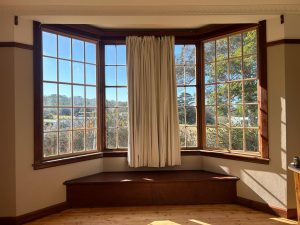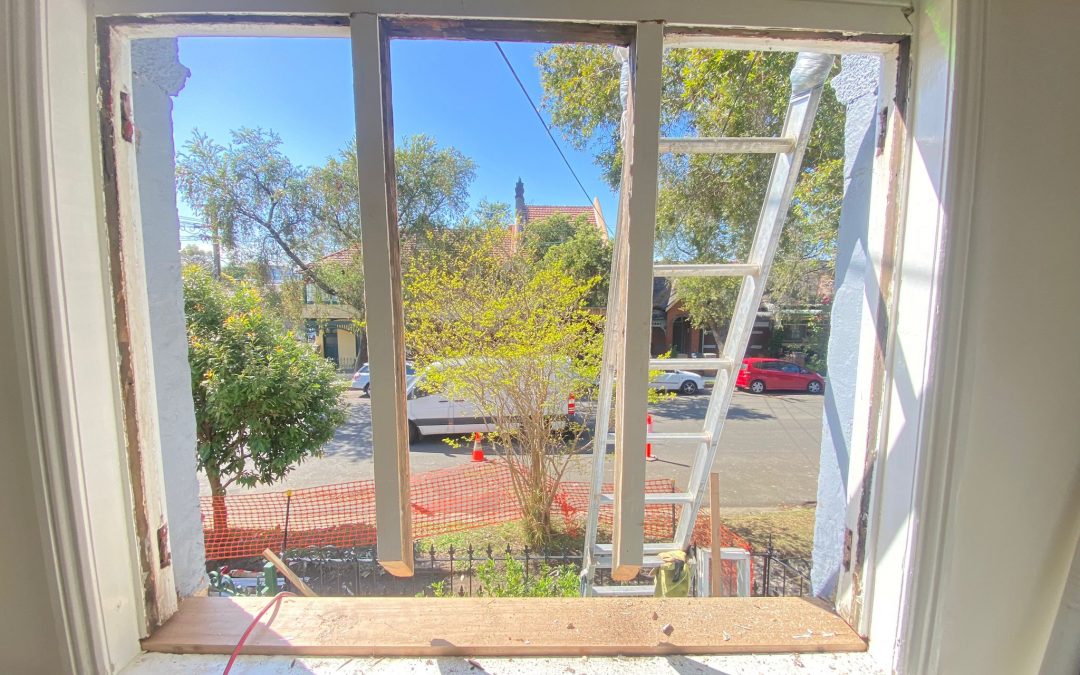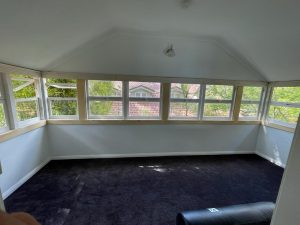1. Sealed Insulated Glass Units (IGUs)
Sealed IGUs consist of two or more glass panes separated by a hermetically sealed airspace filled with a gas like argon or krypton.
This method provides effective thermal insulation and noise reduction. The sealed unit prevents heat transfer between the interior and exterior, enhancing energy efficiency. Ideal for residences in the Blue Mountains, where temperature variations are common. Suburbs like Katoomba and Blackheath, where cooler temperatures necessitate effective thermal insulation.
2. Thermal Spacer Bars
Spacer bars are used to maintain the separation between glass panes in an IGU. Thermal spacer bars with low conductivity materials, such as thermally broken aluminum or uPVC, help reduce heat transfer.
Thermal spacer bars contribute to improved insulation by minimizing the impact of the frame on overall thermal performance. Well-suited for coastal areas such as Byron Bay and Coffs Harbour. Coastal regions often experience milder temperatures, and thermal spacer bars contribute to improved insulation without compromising the view.
3. Low-E Coatings
Low-emissivity (Low-E) coatings are applied to glass surfaces to reflect heat while allowing visible light to pass through. These coatings are often used in conjunction with double glazing.
Low-E coatings enhance energy efficiency by reducing heat loss in winter and minimizing heat gain in summer. They also mitigate UV radiation. Particularly beneficial in areas with high sun exposure, like Newcastle. Suburbs along the coastline, where summers can be hot, and Low-E coatings help in minimizing heat gain.
4. Gas Filling
Inert gases like argon or krypton are sometimes injected into the airspace between double glazing panes. These gases provide additional insulation compared to air.
Gas filling improves thermal performance by reducing heat transfer and enhancing the overall efficiency of double glazing. Effective in areas with diverse temperature ranges, such as Wagga Wagga in the Riverina region. Inland regions experience both hot summers and cold winters, making gas-filled double glazing valuable for year-round thermal efficiency.
5. Secondary Glazing
Secondary glazing involves adding an additional layer of glass or acrylic to the interior side of existing windows. This creates a double-glazed effect without replacing the original windows.
Secondary glazing is a cost-effective method to enhance insulation, reduce noise, and improve energy efficiency. Suited for historic or heritage-listed buildings in Sydney’s inner suburbs. Suburbs like Paddington or Balmain, where preserving the original windows is essential, and secondary glazing enhances insulation.
6. Magnetic Retrofit Double Glazing
This involves installing a secondary glazing panel with a magnetic strip around the existing window frame. The secondary glazing panel attaches magnetically, creating a double glazing effect.
Magnetic retrofit double glazing provides a reversible and cost-effective solution for improving insulation. Practical for rental properties in Wollongong, where a reversible solution is preferred. Rental apartments in Wollongong’s central business district, providing a cost-effective and non-permanent improvement in insulation.
7. Hybrid Double Glazing Systems
Hybrid systems combine different materials and technologies to optimize thermal performance. For example, a combination of uPVC framing with low-E glass and thermal spacer bars.
Hybrid systems leverage the strengths of different materials to achieve an optimal balance between energy efficiency and structural integrity. Optimal for new builds in Albury-Wodonga, where a balance of energy efficiency and structural integrity is crucial. As a border city, Albury-Wodonga experiences varied temperatures, making hybrid systems valuable for achieving both insulation and durability.
It’s essential to consider factors such as climate, building design, and budget when choosing double glazing methods for windows and doors in Australia. Professional advice and installation are crucial to ensuring the effectiveness of the chosen double glazing solution.

Why Choosing the Right Double Glazing Method is Crucial for Homeowners
Choosing the right double glazing method is a crucial decision for homeowners, as it has a profound impact on various aspects of their living environment. Firstly, the energy efficiency of a home is directly influenced by the selected method. Opting for materials and technologies that provide effective insulation can lead to significant cost savings on heating and cooling while aligning with sustainable living practices. Additionally, the adaptability of the chosen method to the specific climate challenges of a region, such as the varied temperatures in New South Wales, ensures year-round comfort for residents.
Moreover, the importance of the right double glazing methods extends to enhancing overall comfort and well-being. It contributes to a more pleasant indoor environment by maintaining consistent temperatures, minimizing drafts, and reducing external noise. Long-term durability, personalization options for aesthetics, and the potential to increase property value further emphasize the strategic nature of this decision. By prioritizing environmentally friendly materials, homeowners not only contribute to global sustainability goals but also ensure compliance with local building codes and regulations. In essence, selecting the appropriate double glazing methods are not just about immediate needs; it’s a forward-thinking choice that shapes a sustainable and resilient living environment for years to come.


